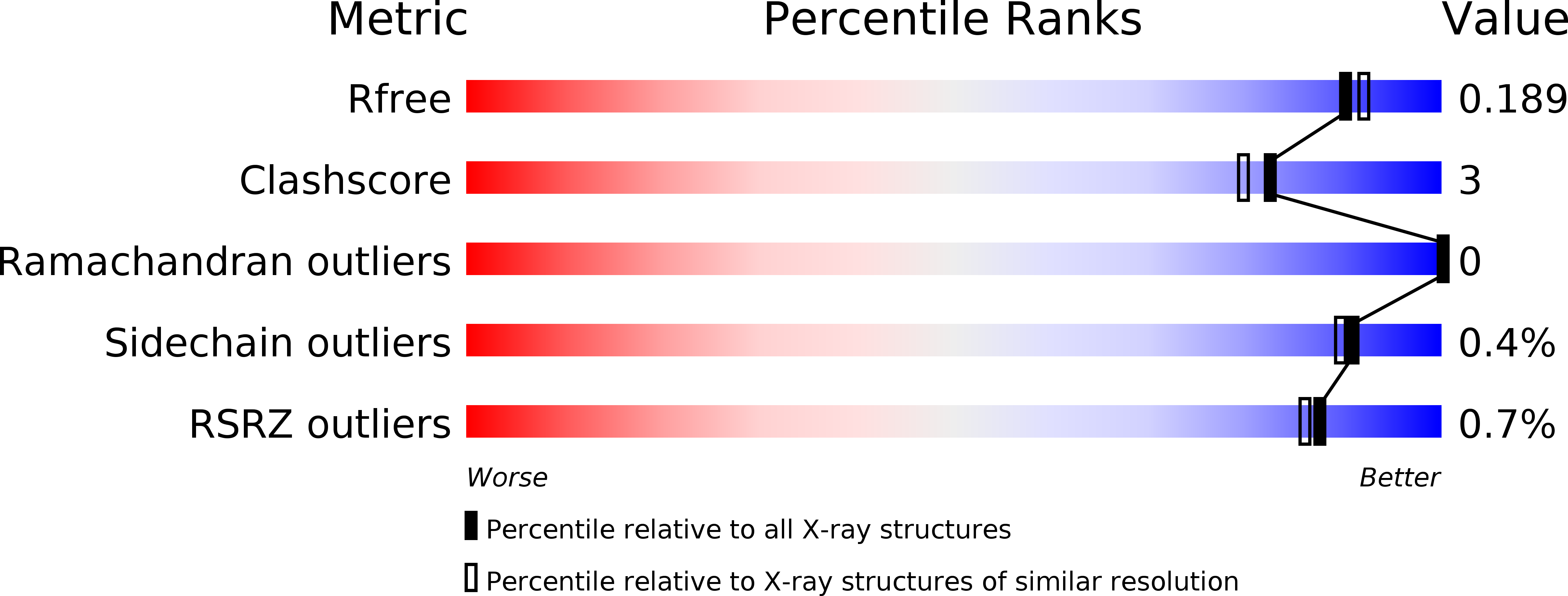
Deposition Date
2017-09-13
Release Date
2018-02-07
Last Version Date
2023-11-15
Entry Detail
PDB ID:
6AZT
Keywords:
Title:
Asparaginyl endopeptidase 1 bound to AAN peptide, a tetrahedral intermediate
Biological Source:
Source Organism:
Helianthus annuus (Taxon ID: 4232)
synthetic construct (Taxon ID: 32630)
synthetic construct (Taxon ID: 32630)
Host Organism:
Method Details:
Experimental Method:
Resolution:
1.80 Å
R-Value Free:
0.18
R-Value Work:
0.15
R-Value Observed:
0.15
Space Group:
P 31 2 1


